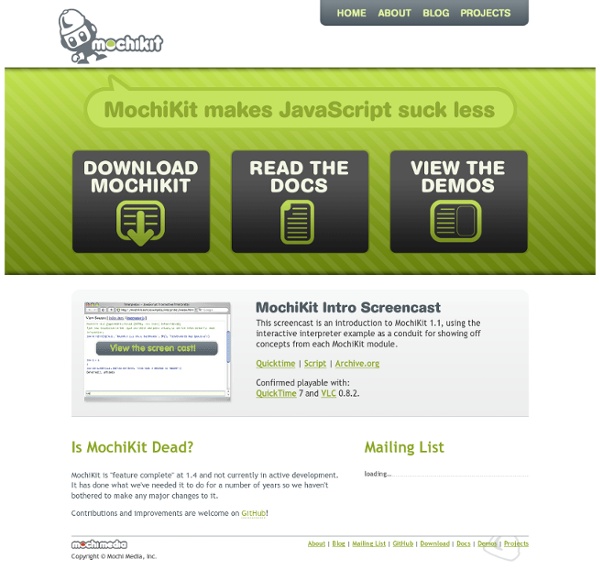



Pylons Python Web Framework Studio Free, open source IDE for Ruby and Rails applications RadRails is now included as part of Aptana Studio 3. No extra download required--now integrated into a single editor. Core Capabilities Code Assist Quick access to Ruby, HTML, CSS and JavaScript structures, methods, elements, properties, tags & attributes. Code Assist Integrated Debugger Set breakpoints, inspect variables, control execution. Integrated Debugger Outlining View and navigate the structures in your file using this hierarchical outline of your Ruby or HTML page. Outlining
TurboGears: Front-to-Back Web Development Rediscovering the Button Element Introduction Creating a consistent interface for your users is a constant struggle for every application designer. Building consistency on the web is especially tough because the visual rendering differences across browsers and operating systems are wildly different and almost arbitrary in what can and cannot be done. As is, the input with the type=”submit” is either too ugly (Firefox), a little buggy (Internet Explorer) or completely inflexible (Safari). Inputs vs Buttons So, here’s your standard submit button markup: And it looks like this across the three brothers: Meh. <button type="submit">Submit</button> And it looks like this : These buttons work and behave in exactly the same way as our counterparts above. <button type="submit"><img src="" alt="" /> Submit</button> Which looks like this : Nice. Buttons created with the BUTTON element function just like buttons created with the INPUT element, but they offer richer rendering possibilities: the BUTTON element may have content. The Results
CSS Tip: Get Any Font You Want CSS Tip: Get Any Font You Want by Larisa Thomason, Senior Web Analyst, NetMechanic, Inc. Have your heart set on using a particular font on your site? You may think your online video sales Web site won't be complete without the "Showtime" font. But what if your visitors' browsers don't have Showtime installed and default to Times Roman instead? If your page requires an unusual font, you can embed it with a Cascading Style Sheet (CSS). Why Use Embedded Fonts? Because a font is an operating system resource, not a browser resource. From a page designer's perspective, this is a big weakness. That's where embedded fonts come in: with them, you don't have to worry about browsers defaulting to a more common font. Apply the font by name to your page using either the <FONT FACE> tag or the FONT-FAMILY property in CSS1. Embedding a font is a 3-step process: 1. Finding fonts is easy. Do some research first though: some designers don't allow their fonts to be embedded. 2. 3. Attaching A TrueDoc File
BlueTrip CSS Framework :: Home Page WebApp.Net Web Design for Developers